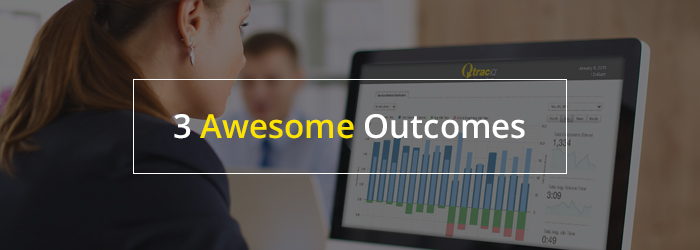How many people are standing in your waiting lines at a given moment? How long will they be waiting? How long is too long? At what point are your queues hurting your ability to convert or retain customers?
Why do the answers to these questions matter? Simply put, customers generally despise waiting. Make them wait too long or put them through an unorganized, arduous waiting process and you’re bound to feel the negative effects on your business.
Studies show that poor customer service accounts for 86% of lost customers. And since the waiting line is often the final encounter a customer has with a business, a poor experience in a queue can have a lasting impact.
So where do queue analytics come in? Queue analytics result from the systematic analysis of data around “queue performance indicators.” Some common data captured by queue analytics systems include customer counts, wait times, traffic trends, service point utilization, arrival rates, and service rates. In other words, the factors that drive wait times and productivity. Data can be captured through easy-to-install sensors or other devices that collect information and deliver analytics to you through online dashboards and/or real-time alerts.
Here are three awesome outcomes you can achieve with queue analytics:
1. A better customer experience
A well managed queue allows wait times to be minimized and staff productivity to be at its best. These things have a direct positive impact on the customer experience. But there’s more to it. Another way for a queue analytics system to improve the customer experience is through communication. Through monitors in the queuing area or through text messaging, your queue analytics system can calculate and publish accurate wait times to keep customer expectations in check. It can also help balance service loads by directing customers to the best service areas.
2. Optimized service delivery
Speed of service is one way to make waiting lines move faster but there’s something to be said for working smarter, not harder. Queue analytics can greatly simplify the process of managing staff and allocating service delivery across queues or throughout a store, airport, or other facility.
For example, queue analytics systems can allow associates to see how many people are waiting or if wait times are starting to get too long. Systems can also be programmed to automatically direct customers to open queues or available service areas in other parts of the facility. Combining real-time and historical data, managers can also better predict staffing needs and make adjustments on the fly based on current needs.
3. Better overall business performance
Combine a better customer experience with optimized service delivery and the natural outcome is better overall business performance. When you consider how much business is transacted through waiting lines, it pays to invest in the analytics you need to get it right.
Are you putting queue analytics to work for your business? By investing in queue analytics you can improve the customer experience, optimize service delivery, and improve your business performance. Learn more by exploring Qtrac iQ queue analytics.










